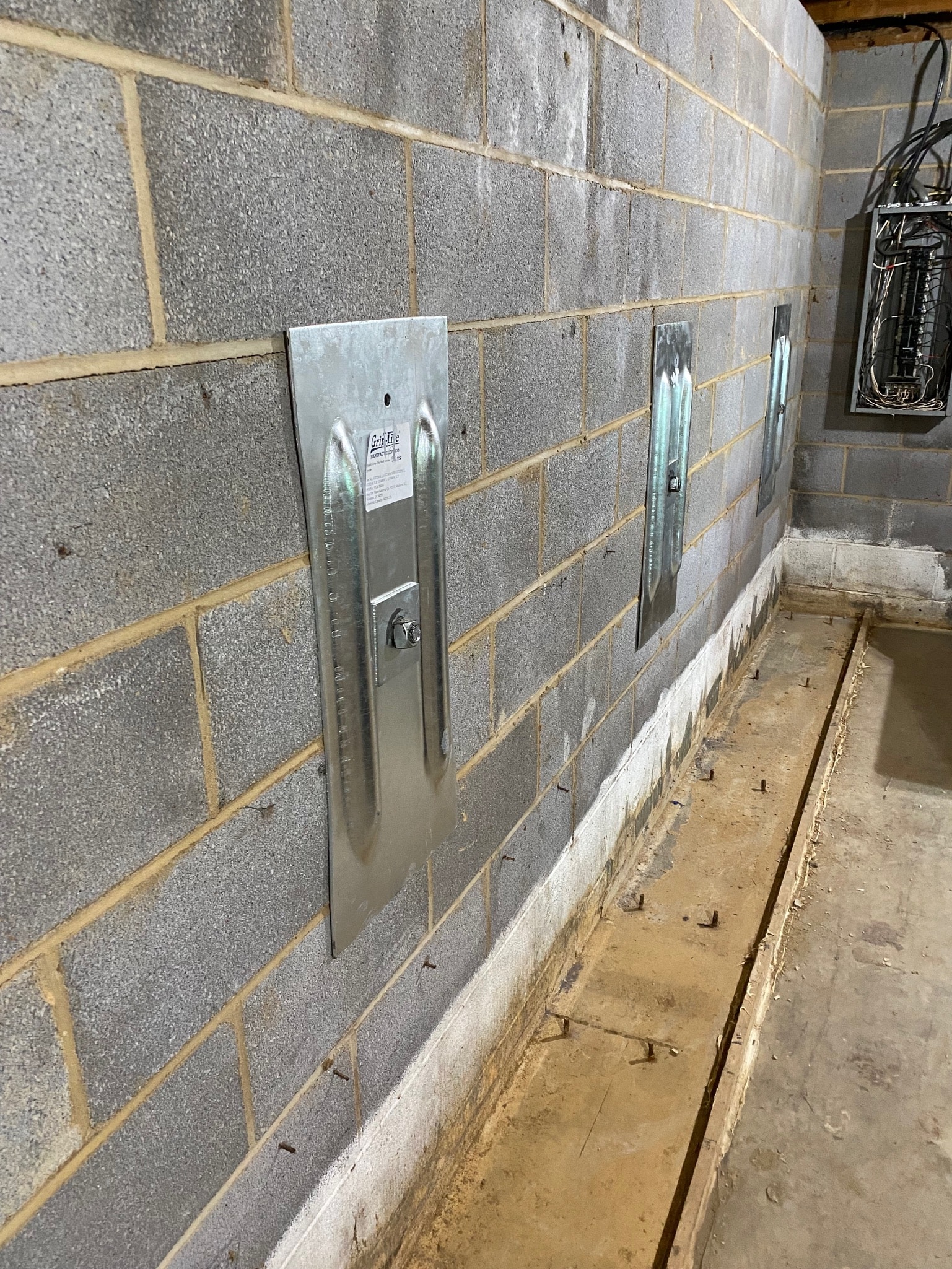
You’ve probably heard that an ounce of prevention is worth a pound of cure, and this couldn’t be truer when it comes to your home’s foundation. Let’s consider the role of effective drainage in maintaining your foundation’s integrity. Imagine not having to worry about soil erosion or water accumulation causing costly damage. When combined with regular foundation repairs, a well-planned drainage system can save you a significant amount of time, money, and stress in the long run. Intrigued? Stick around to explore more about this combined approach and how it can benefit you.
Key Takeaways
- Combining drainage and foundation repair enhances building longevity by managing soil conditions and maintaining moisture balance.
- Joint solutions are cost-effective and prevent further damage, mitigating soil expansion, contraction, and erosion.
- Professional repair techniques and regular inspections ensure ongoing stability and identify recurring issues like cracks or movement.
- Proper drainage systems like gutters, downspouts, and landscape grading keep water away from the foundation, preventing soil erosion.
- Proactive measures like regular inspections and maintaining vegetation around the foundation aid in moisture control, supporting foundation integrity.
Understanding Foundation Problems
Imagine waking up one morning to find cracks creeping up your home’s walls. It’s unsettling, isn’t it? This is often a sign of foundation problems caused by soil settlement. When soil beneath your home compresses or shifts, it can lead to uneven foundation settling. This, in turn, can cause significant damage, including those menacing wall cracks.
So, what’s the deal with soil settlement? It has a lot to do with moisture control. If your soil is too dry, it can contract and cause your foundation to settle. On the flip side, overly moist soil can expand and push against your foundation, leading to upheaval. It’s a delicate balance, and one that’s essential to keep.
You’re probably wondering how to prevent such problems. Well, it’s not about eliminating moisture entirely. It’s about effective moisture control—ensuring the soil maintains just the right level of moisture.
That’s where proper drainage comes in. But we’ll explore more into that in the next section, “The Role of Proper Drainage”. For now, understand that tackling foundation problems involves addressing both soil settlement and moisture control.
The Role of Proper Drainage
So, you’ve got a handle on foundation problems and the role that soil settlement plays. Now, let’s talk about the role proper drainage plays in it all.
Effective drainage systems are essential in maintaining foundation stability. They aid in water management, efficiently directing water away from your property, thereby preventing soil erosion.
It’s not just about keeping water out; it’s also about controlling moisture levels in the soil surrounding your foundation. This is where landscape grading comes into play. It’s a key element in moisture control, ensuring water flows away from your foundation, not towards it.
When it comes to drainage solutions, you’ve got a range of options. From simple gutter systems and downspouts to more complex French drains, the goal is runoff prevention.
You want to stop water from pooling around your foundation, as it can lead to significant problems down the line.
How Poor Drainage Affects Foundations
We’ve just discussed the importance of proper drainage systems in preventing foundation problems.
Now, let’s explore how poor drainage can wreak havoc on your home’s foundation. When drainage systems fail, water accumulation around your home becomes a serious issue. This can lead to soil erosion, which, in turn, causes foundation settlement.
Without proper moisture control, water seeps into the ground around your home, causing the soil to expand. This creates hydrostatic pressure against your foundation, compromising its structural integrity. Over time, this pressure can cause cracks and other damage that necessitate costly repairs.
Grading solutions and landscape design can play a significant role in directing water away from your home.
However, in areas prone to heavy rainfall, more robust solutions like sump pumps might be necessary to prevent water accumulation.
Combining Drainage and Foundation Repair
There’s a smart way to deal with both drainage issues and foundation damage simultaneously. Effective drainage strategies not only prevent water accumulation but also maintain your foundation integrity.
Here’s a straightforward table explaining how these two methods work together:
| Foundation Repair | Drainage Improvement | Combined Result |
|---|---|---|
| Stabilizes the base of your home | Redirects water away from your foundation | Prevents further damage and fortifies your home |
| Can be a lengthy, invasive process | Usually simpler, less disruptive work | Minimizes overall disruption to your home and yard |
| May not prevent future issues if drainage is poor | Won’t fix existing foundation damage | Provides a thorough, long-term solution |
Steps to Improve Home Drainage
Taking a handful of proactive steps can greatly improve your home’s drainage system.
Begin with gutter maintenance, a task often overlooked, but essential in preventing soil erosion. Keep them clean and free flowing to guide water away from your foundation.
Consider installing downspout extensions, a simple yet effective drainage solution. They’ll direct water further away from your home, reducing the chances of foundation damage.
For more serious water accumulation issues, sump pumps or French drains may be your answer. Both work to divert water from your home, with French drains being a more permanent, hidden solution.
Landscape grading is another significant factor. A well-graded yard will direct water flow away from your home, preventing pooling.
Use drainage basins and rain gardens to further manage water flow, turning a problem into a beautiful landscape feature.
Where possible, opt for permeable pavement. It allows water to seep through, reducing runoff and keeping water away from your foundation.
Professional Foundation Repair Techniques
Now let’s move on to understanding professional foundation repair techniques.
You’ll gain insight into advanced repair methodologies that experts use to fix faulty foundations.
We’ll also touch on how to maintain your foundation after repair, ensuring its longevity and stability.
Understanding Foundation Repair
Delving into the domain of foundation repair, it’s essential for you to be familiar with professional techniques employed by experts. Remember, you’re dealing with the very base of your home – the foundation. Understanding the core principles of foundation repair can help you make informed decisions about your property.
You need to know that there are several foundation types, each with its unique characteristics and repair methods. For instance, slab foundations, typically used in warmer climates, often require underpinning or mudjacking techniques for repair.
On the other hand, pier and beam foundations, common in cooler climates, might need leveling or additional support systems.
It’s also crucial for you to understand that not all foundation issues are the same, hence the repair methods vary. Minor cracks might just need sealing, while major shifts could require extensive work like piering or slabjacking.
Let’s not forget that foundation repair isn’t a DIY task. It’s a complicated process requiring professional expertise. So when you see signs of foundation damage, don’t attempt to fix it yourself.
Instead, reach out to a professional who’s trained in various foundation repair techniques. They can provide a lasting solution, ensuring your home stands strong for years to come.
Advanced Repair Methodologies
Building on your understanding of foundation repair, let’s explore some advanced repair methodologies employed by professionals.
These innovative techniques make use of the latest material advancements, ensuring durable and long-lasting results.
One such technique is the use of hydraulic piers. These are driven into the ground to the point of refusal, which is the depth where the soil is firm enough to support the weight of the structure.
These piers provide a solid base, reducing the chances of future foundation issues.
Another advanced method is the use of helical piers. Unlike hydraulic piers, these are screwed into the ground, providing additional stability.
This method is particularly useful in areas prone to soil movement or erosion.
Polyurethane foam injection is another innovative technique you’ll come across. Here, a high-density foam is injected into the ground, filling gaps and providing stability.
This method is quick, non-invasive, and highly effective, especially for smaller repairs.
Lastly, professionals often use carbon fiber straps to strengthen foundation walls. These straps are adhered to the wall using a high-strength epoxy, effectively preventing further movement or cracking.
These advanced repair methodologies, when combined with proper drainage, offer you lasting solutions to your foundation problems.
Maintenance After Repair
After securing your foundation with advanced repair techniques, it’s crucial to maintain the integrity of your work. This maintenance isn’t something to be taken lightly.
Post repair inspections are your first line of defense. They guarantee that the repairs have settled in properly and are performing as they should. Your inspector will check for any signs of recurring issues, like cracks or movement.
Don’t let this inspection be a one-time event. Make it a part of your routine maintenance plan. Regular inspections can catch small problems before they turn into big ones, saving you time and money in the long run.
Routine maintenance goes beyond just inspections. It includes tasks like cleaning gutters and downspouts to prevent water damage, and keeping soil around your foundation at the right moisture level.
It’s about creating an environment that supports your foundation, not undermines it.
Long-Term Benefits of Combined Approach
You’ll find that the long-term benefits of combining drainage and foundation repair are substantial.
To begin with, you’ll achieve enhanced structural stability, securing your property for years to come.
Additionally, it’s a cost-effective solution, saving you money in the long run by preventing further damage and costly repairs.
Enhanced Structural Stability
Three major benefits come with combining drainage and foundation repair – cost-effectiveness, time efficiency, and enhanced structural stability.
You’ll find the latter benefit particularly interesting, as it directly affects the longevity of your building.
By combining drainage and foundation repair, you’re effectively addressing the soil composition beneath your property.
You’re optimizing the balance of moisture in the ground, preventing problems like soil expansion, contraction, or erosion.
These issues can, over time, create an unstable base for your building, which can lead to structural damage.
But when you manage these factors effectively, the load distribution across your property becomes more even.
This balance reduces the stress on your building’s foundation, preventing cracking, sinking, or other types of damage.
The result? A more stable structure, both immediately and in the long term.
Cost-Effective Solution
Ever wondered why many property owners prefer the combined approach to drainage and foundation repair? Well, it’s not just about fixing the issues at hand. It’s also about long-term benefits and cost-effectiveness.
When you opt for a joint solution, you’re fundamentally killing two birds with one stone. You’re addressing both drainage and foundation problems, which not only saves you time but also money. It’s a smart move, especially when you’re on a tight budget.
Now, let’s talk about affordable options. You might think that a combined approach is pricey, but it’s not. It’s often cheaper than tackling the problems separately. Why? Because you’re only dealing with one contractor, and there’s no need for repeated inspections or separate teams.
Furthermore, this approach allows for better budget planning. You know upfront what the costs will be, so there are no unpleasant surprises. You can also negotiate a more cost-effective deal because the contractor is handling both jobs.
Frequently Asked Questions
What Is the Average Cost of a Comprehensive Foundation and Drainage Repair?
You’re likely wondering about the average cost of thorough foundation and drainage repair.
It’s tricky to provide a specific figure as cost factors vary. Things like the severity of damage, repair materials used, and your home’s location can greatly influence the price.
However, generally, you might be looking at thousands to tens of thousands of dollars.
It’s best to get a professional assessment for an accurate quote.
How Long Does a Foundation and Drainage Repair Process Typically Take?
You’re asking about the repair timeline for a foundation and drainage repair process.
Typically, the project phases can span several weeks. It begins with assessment and plan formulation, followed by the actual repair work.
This might take a few days to several weeks depending on the extent of damage.
Post-repair cleanup and final inspection wrap up the process.
Are There Any Specific Signs to Look for Indicating Foundation and Drainage Problems?
Yes, there’re certain signs you should be aware of.
If you notice cracked walls, it’s a clear signal of foundation issues. Wet basements too can indicate drainage problems.
Don’t ignore doors and windows that stick or don’t close properly, as they can be signs of foundation trouble.
Also, pay attention to any unusual dampness or a musty odor in your home.
These are key indications that your foundation and drainage system may need repair.
Does Homeowners Insurance Typically Cover Foundation and Drainage Repair?
Typically, homeowners insurance policies don’t cover foundation and drainage repair.
It’s often considered part of your home’s maintenance, which you’re responsible for. However, if the damage is caused by a covered peril, like a fire or a burst pipe, you might be covered.
Always check your policy’s coverage limits and exclusions. It’s important to maintain your property to prevent these problems from cropping up.
What Steps Can I Take to Prevent Future Foundation and Drainage Issues?
To prevent future foundation and drainage issues, you’ll need to focus on preventive maintenance.
Regularly check for cracks in your foundation and fix them promptly.
Monitor your drainage systems to verify they’re working properly.
Landscape grading is another important factor.
Make sure your property slopes away from your home to prevent water pooling and potential foundation damage.
Conclusion
So, you see, combining drainage and foundation repair isn’t just smart, it’s essential. It helps manage water and soil erosion, extending your building’s lifespan, and saving you money in costly future repairs. With regular upkeep and professional inspections, you’ll maintain a moisture balance that promotes structural integrity and reduces stress on your foundation. Take this integrated approach and enjoy the long-term benefits of a stable, healthy foundation.

Seal-tite Basement Waterproofing Co. is a full service basement environment contractor. We carry an A+ Better Business Bureau rating. We repaired over 40,000 homes and structures in Virginia, West Virginia, Tennessee, and North Carolina. We are fully insured and licensed. We have worked in all types of locations, including residential and commercial locations, government agencies, colleges, hospitals, churches, and condo associations.
Seal-tite® offers a lifetime transferable warranty. We carry a Class A Contractor’s License and we are fully insured. Our satisfied customers range from government agencies to businesses, hospitals, colleges, churches, and thousands of homeowners. Your home is probably the single largest investment you will make in your lifetime. Don’t wait, call Seal-tite® to help make your home dry, safe and livable.

